Tomb of Itmad-Ud-Doulah

Alongside the Yamuna River lie the gardens and mausoleum of the Lord Treasurer (Itmad-Ud-Doulah) to the fifth Mughal Emperor Jahangir, housing the remains of his wife, as well, and built by their daughter (the mother of Mumtaz Mahal, later entombed in the Taj Mahal). Besides being comprised of simply beautiful buildings, the mausoleum is important as the first executed in white marble. As with other important mosques, tombs, and forts, the grounds are entered through imposing gateways.







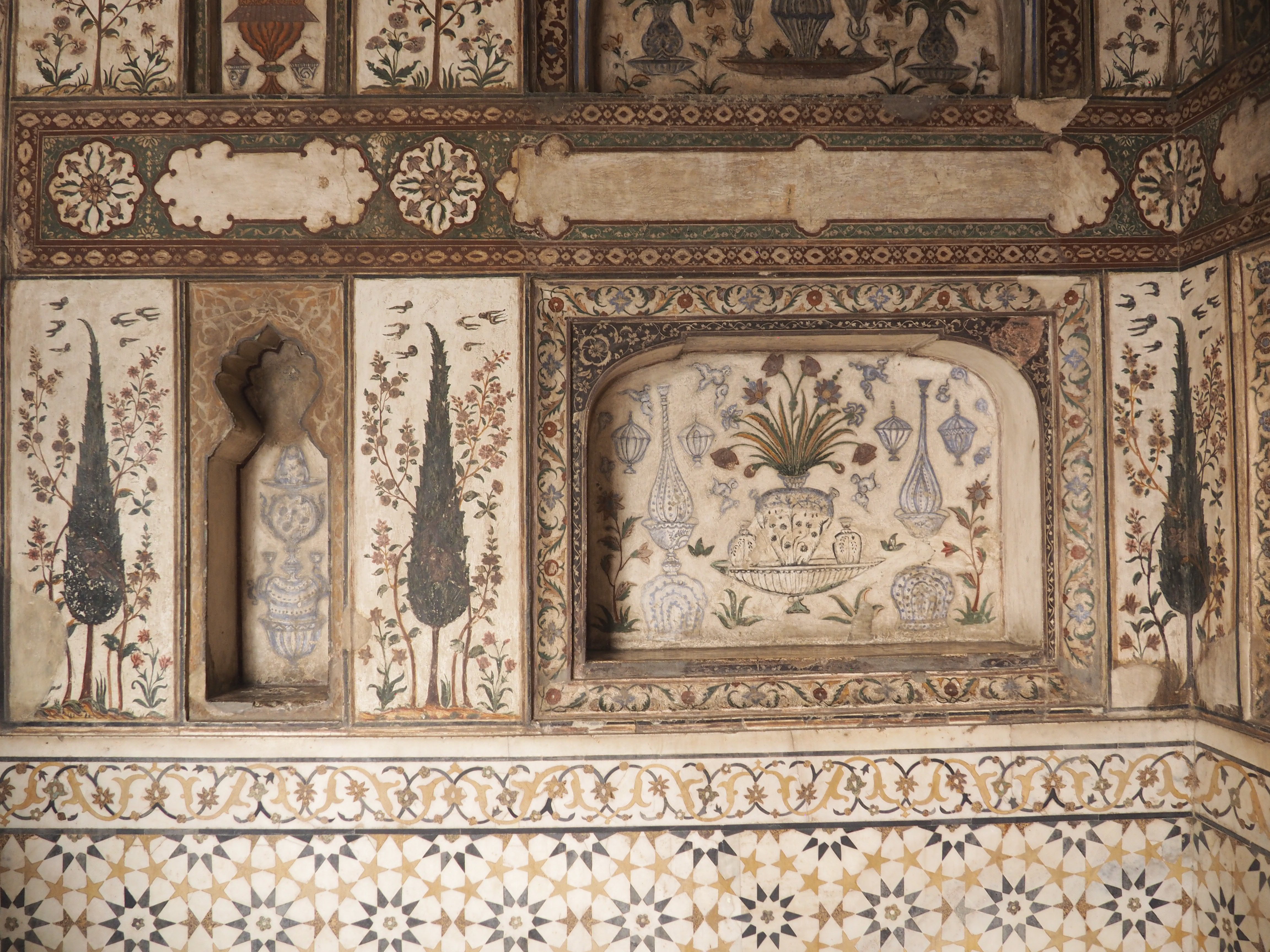

Pleasure Garden of Mehta Bagh





Mehta Bagh was the last of 11 pleasure gardens created along the bank of the Yamuna by Emperor Babur in the early 16th century. Later, Shah Jahan (successor to Jahangir) identified it as an ideal place from which to view the Taj Mahal, which it is under different atmospheric conditions than those we encountered. For us, our introduction to the Taj Mahal was a grey looming, not the color effects created by a translucent white marble set to glow by non-hazardous air. Of course, it is still a beautiful and imposing building, impressively constructed. For instance, the four minarets actually lean outwards from true vertical to create the illusion that they are straight.
Taj Mahal
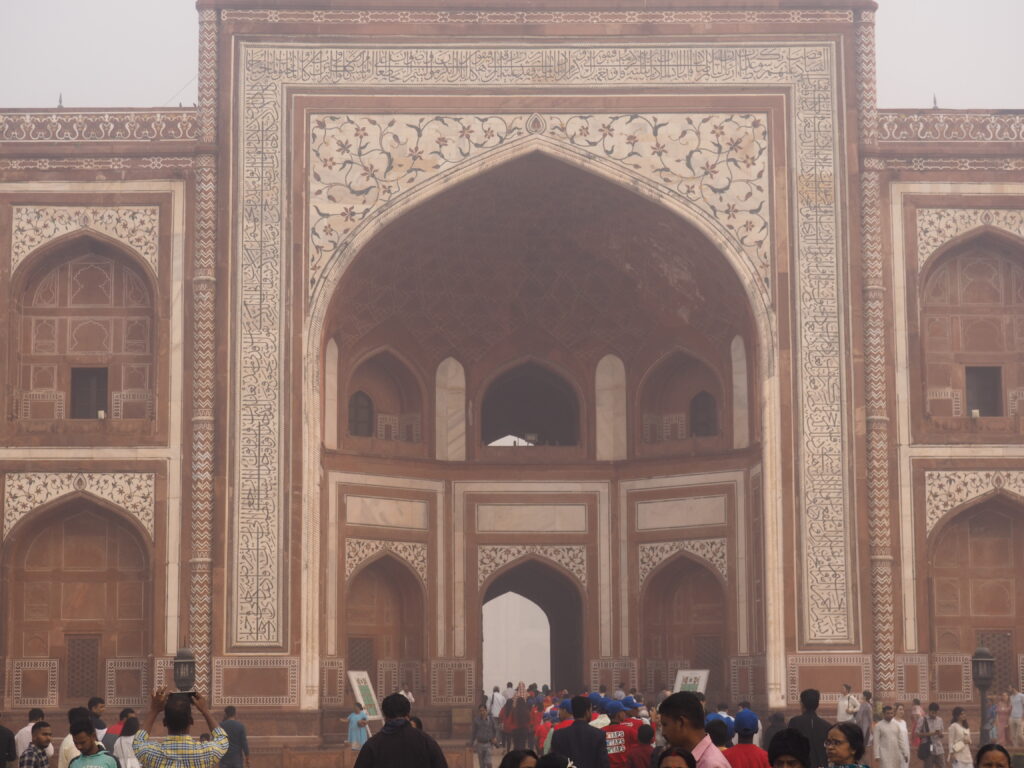
The next morning we made our way to the other side of the Yamuna to visit the Taj directly. Another illusion employed by the architects was to gradually increase the size of the Koranic verses surrounding the large central arch (above) so that to an observer on the ground they appear uniform in size.
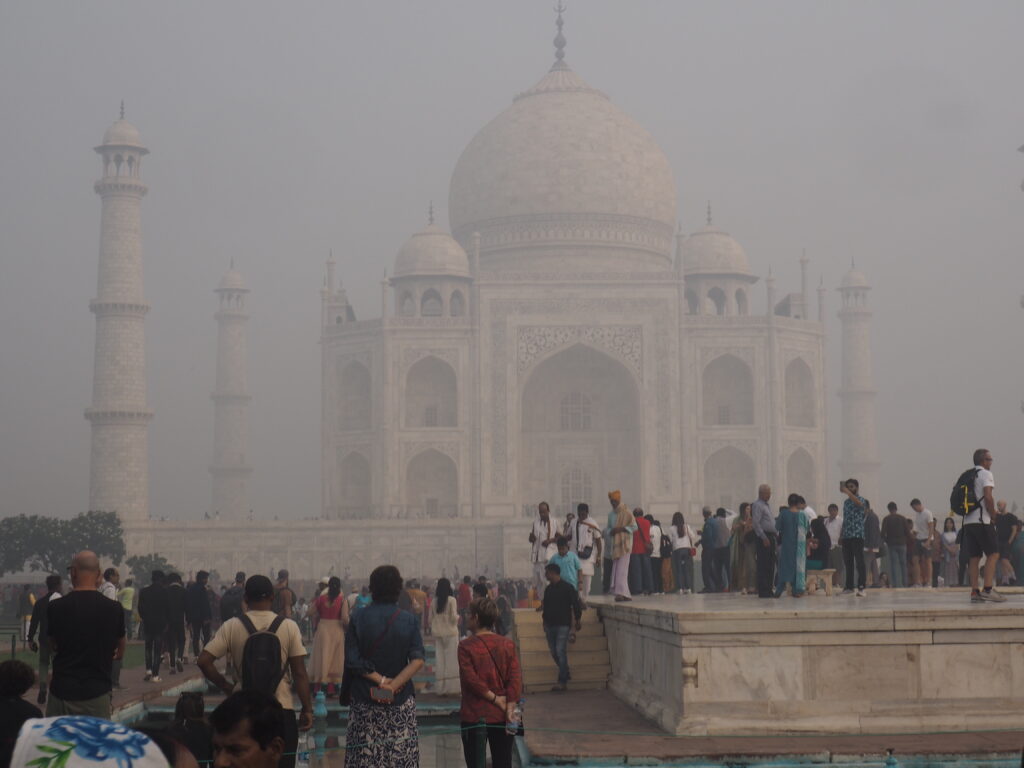
We joined the thousands of fellow devotees patiently waiting for the air to clear to get a better view of this exquisite monument to love.




In the meantime, we donned our little blue booties to go inside and then admire the mausoleum from close up.
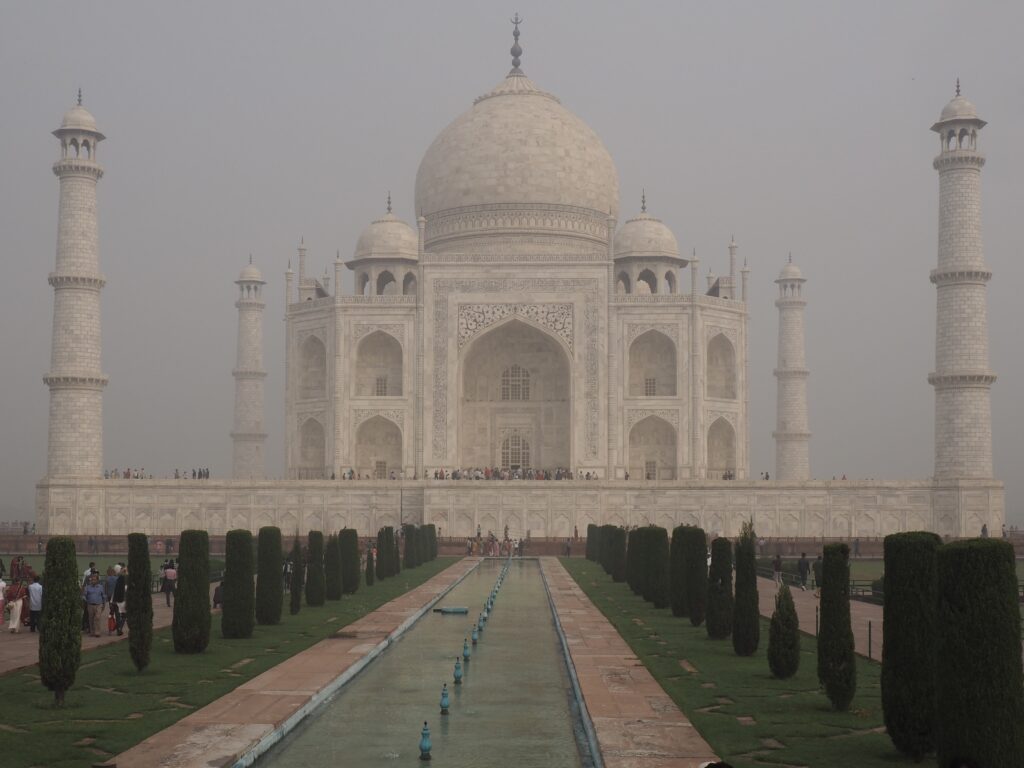
Mumtaz Mahal (Exalted of the Palace), neé Arjuman Banu, was the third and favorite wife of Shah Jahan, reportedly generous and wise and an advisor to her husband who accompanied him on military campaigns. She died bearing her 14th child while on campaign (1630), reportedly begging Jahan to build a monument to their love so beautiful the world could never forget. This he did, but spent his final days as his son’s prisoner, albeit confined to a room with a view of the Taj.




One last look at this fusion of Persian, Ottoman, and Indian traditions made possible only by profound love and grief and the resources to express them.
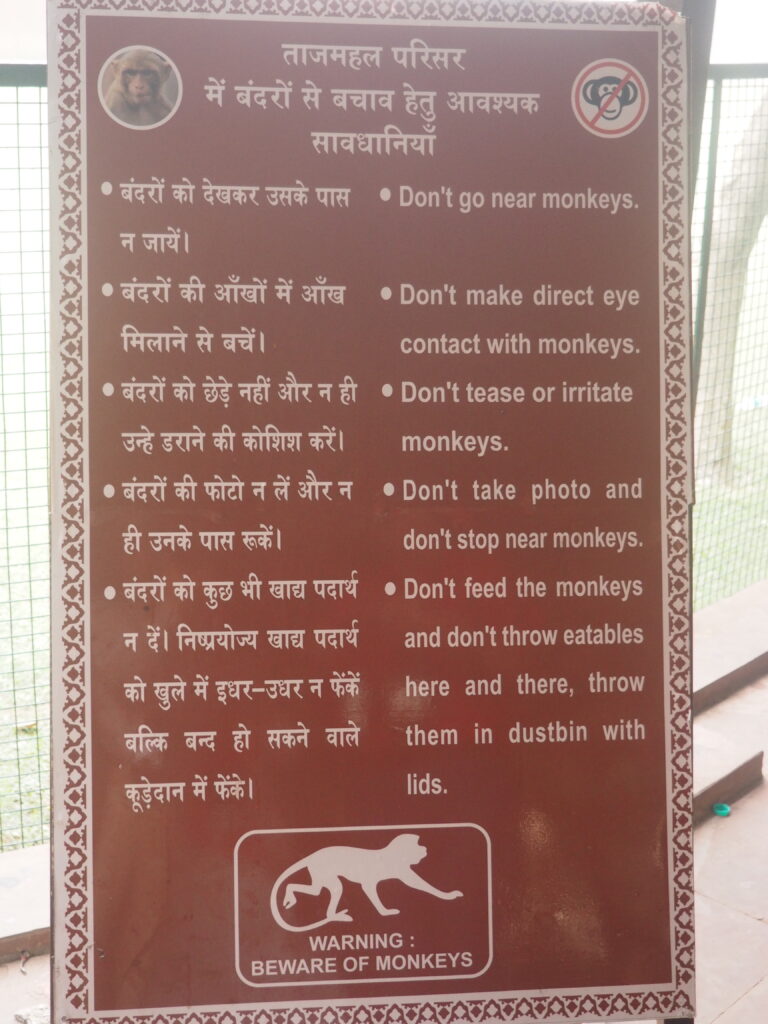
There were numerous warnings about monkeys in the approaches to the Taj Mahal. We had been warned before setting out for the day that, if we still had the marigold garland presented to us on our arrival in Delhi, we needed to leave it behind. Even though they represent purity and positive energy and are associated with Vishnu and Lakshmi, to monkeys they’re a tasty treat.
Agra Fort






It takes a while to get into the interior of Agra Fort, also along the Yamuna about 1.5 kilometers away from the Taj Mahal, really a walled city with a long past. The photo at lower left shows the ramp down which you would roll or pour whatever might impede an invader’s advance, or so we were told. The gateways were designed to protect against the most direct way inside, an elephant breaking through the wooden doors.
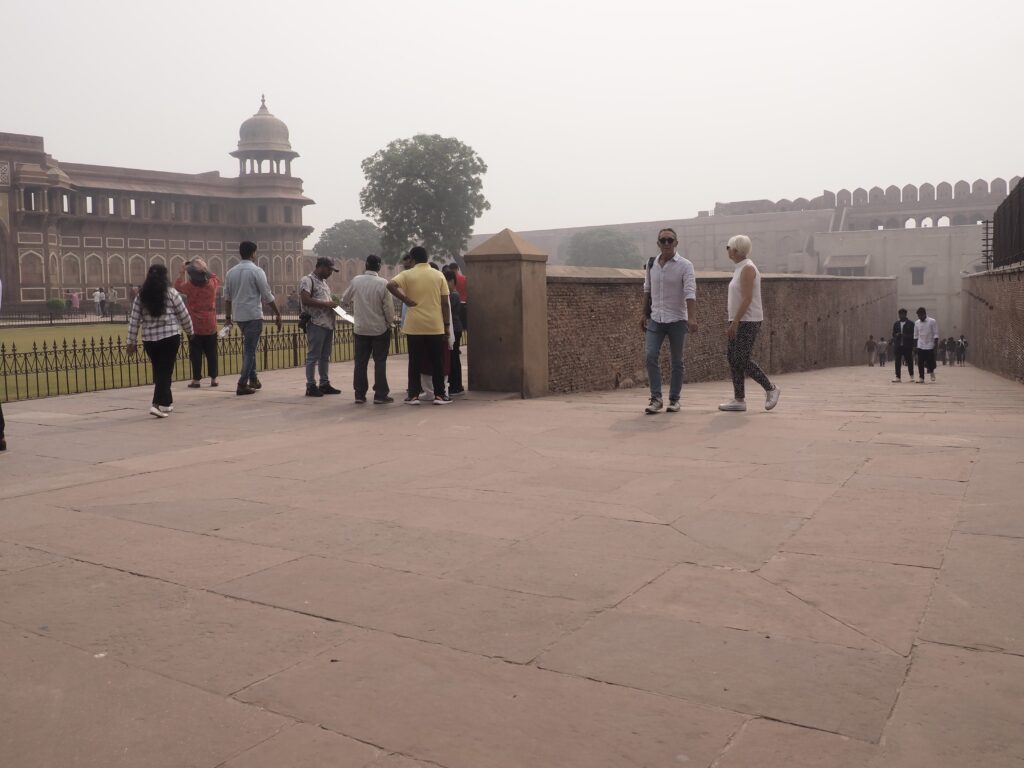
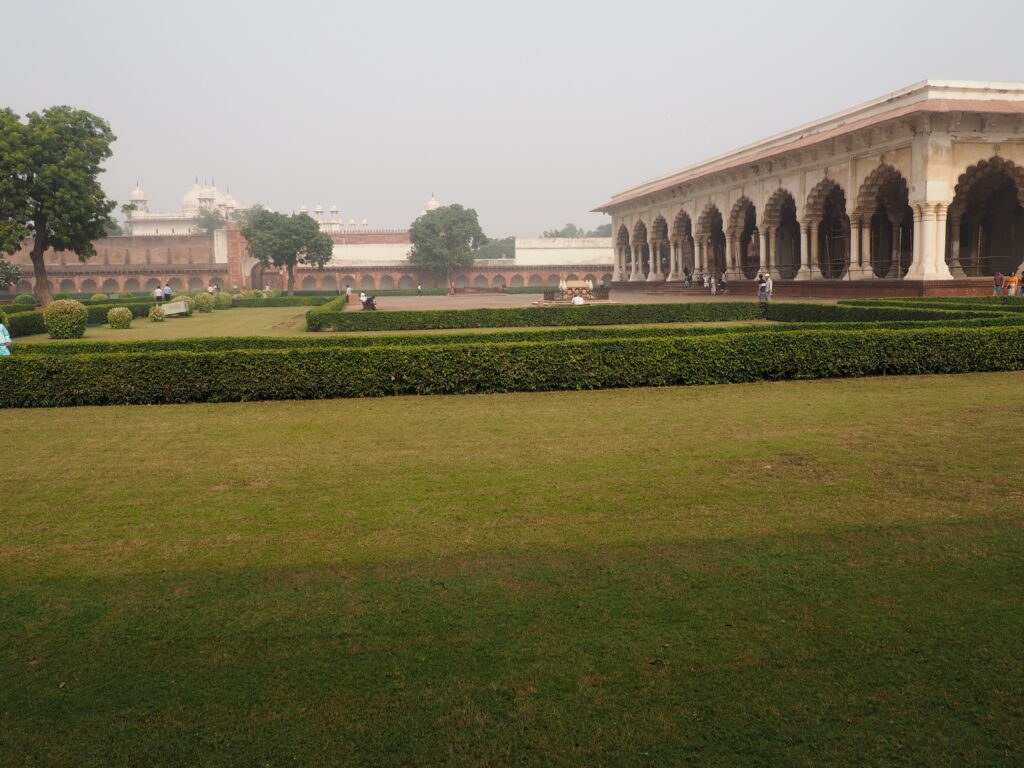


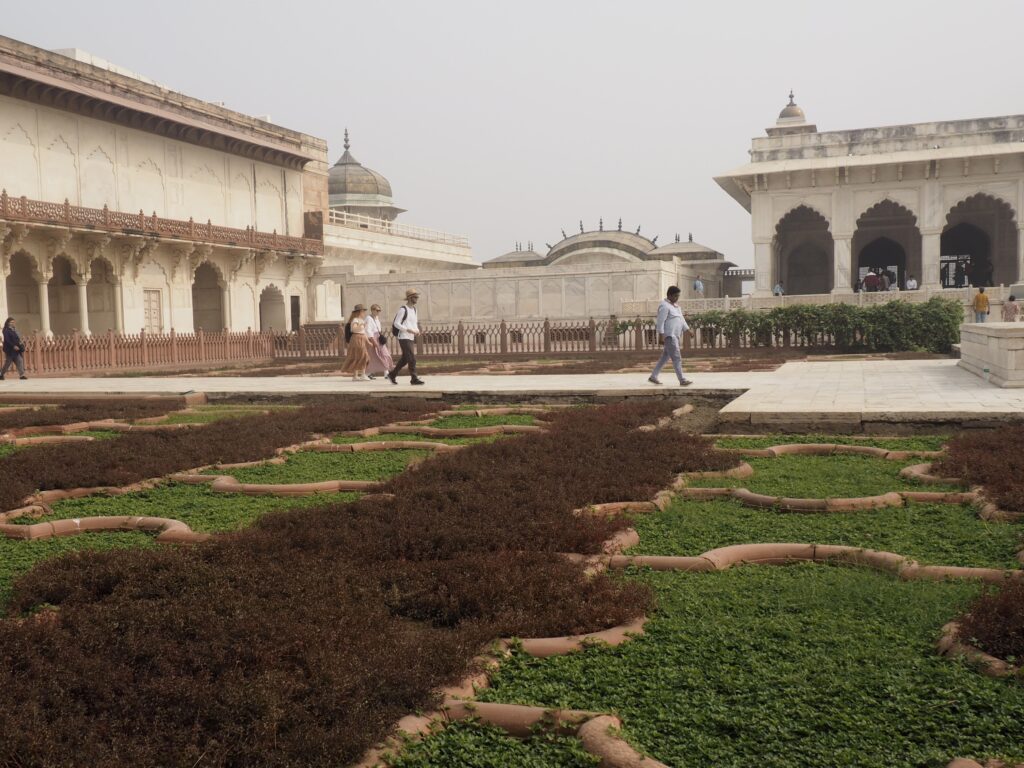
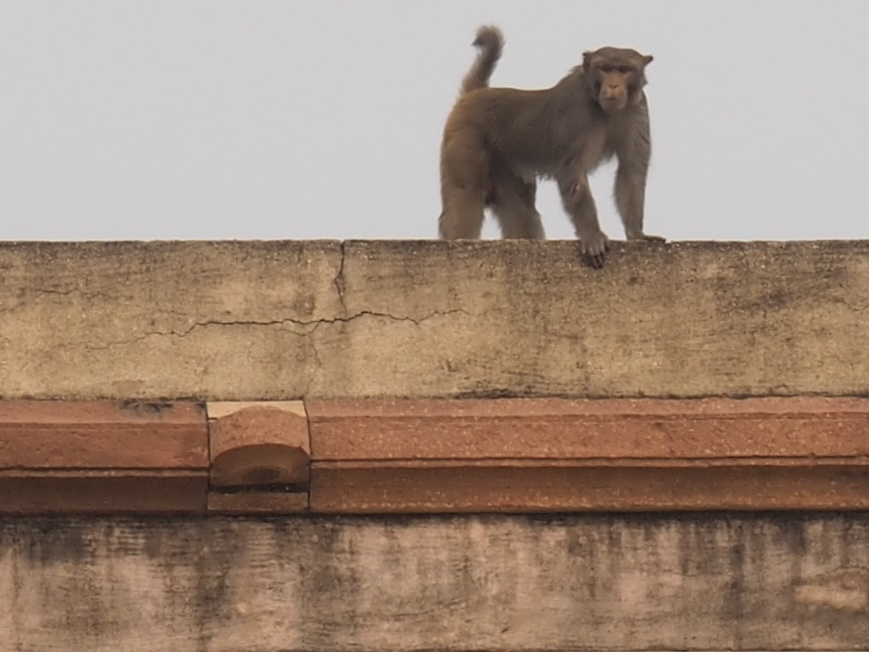
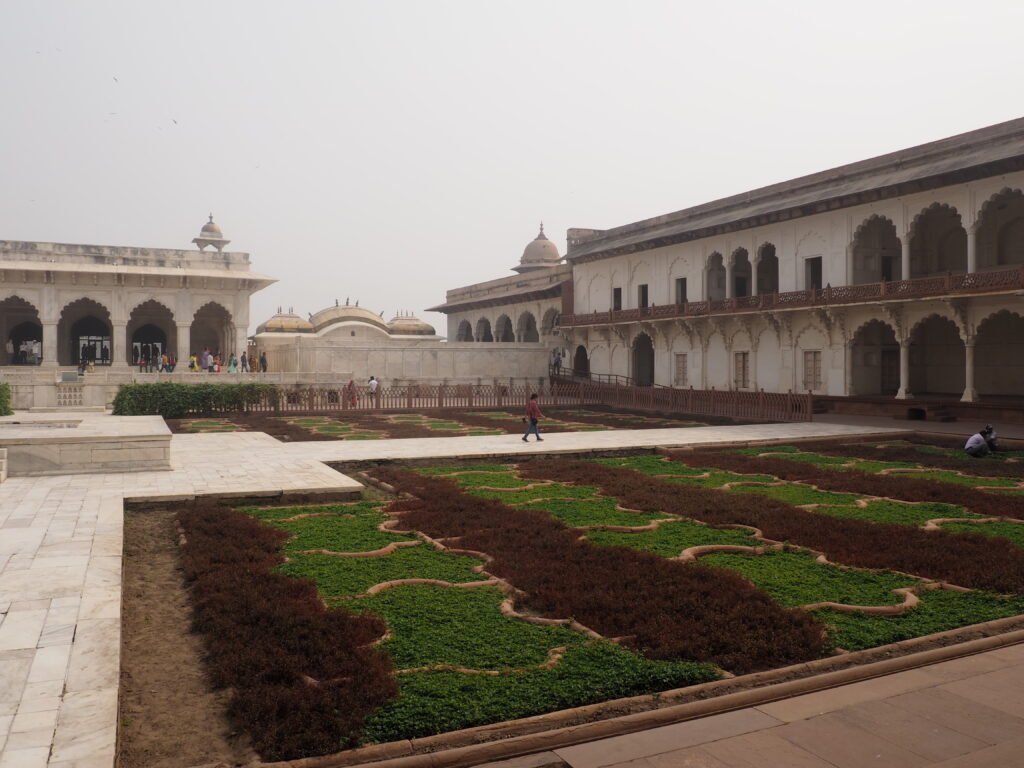

The beginnings of Agra Fort are not well understood, but it began to achieve more importance in the beginnings of the 16th century when the Sultan of Delhi moved his capital to Agra and constructed some buildings inside the fort. Thereafter, it changed hands with some frequency, although the Mughal Emperors were frequent owners. Our friend Shah Jahan is responsible for much of the white marble throughout the palace quarters, where he spent his final captive years looking down the river at the Taj Mahal.














The palace interiors were quite beautiful and well preserved from Shah Jahan’s time, providing a sense of what it might have been like to live there.







The older section of living quarters is simply in red sandstone.
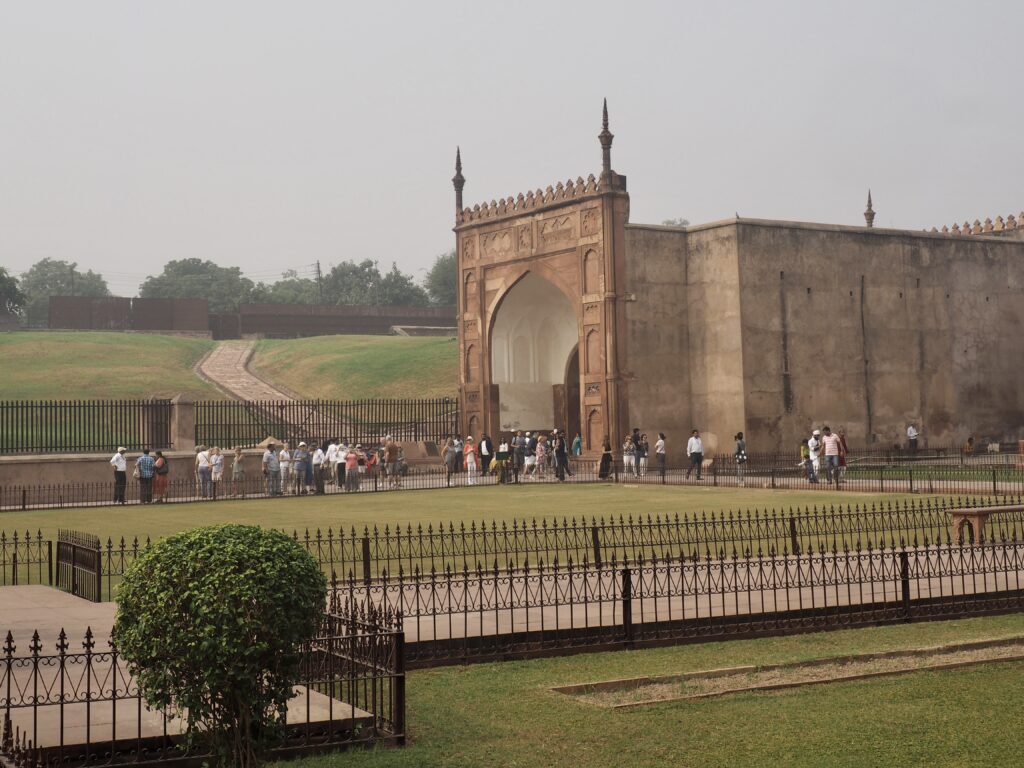


I’m planning to take inspiration from Shah Jahan for our next home project.